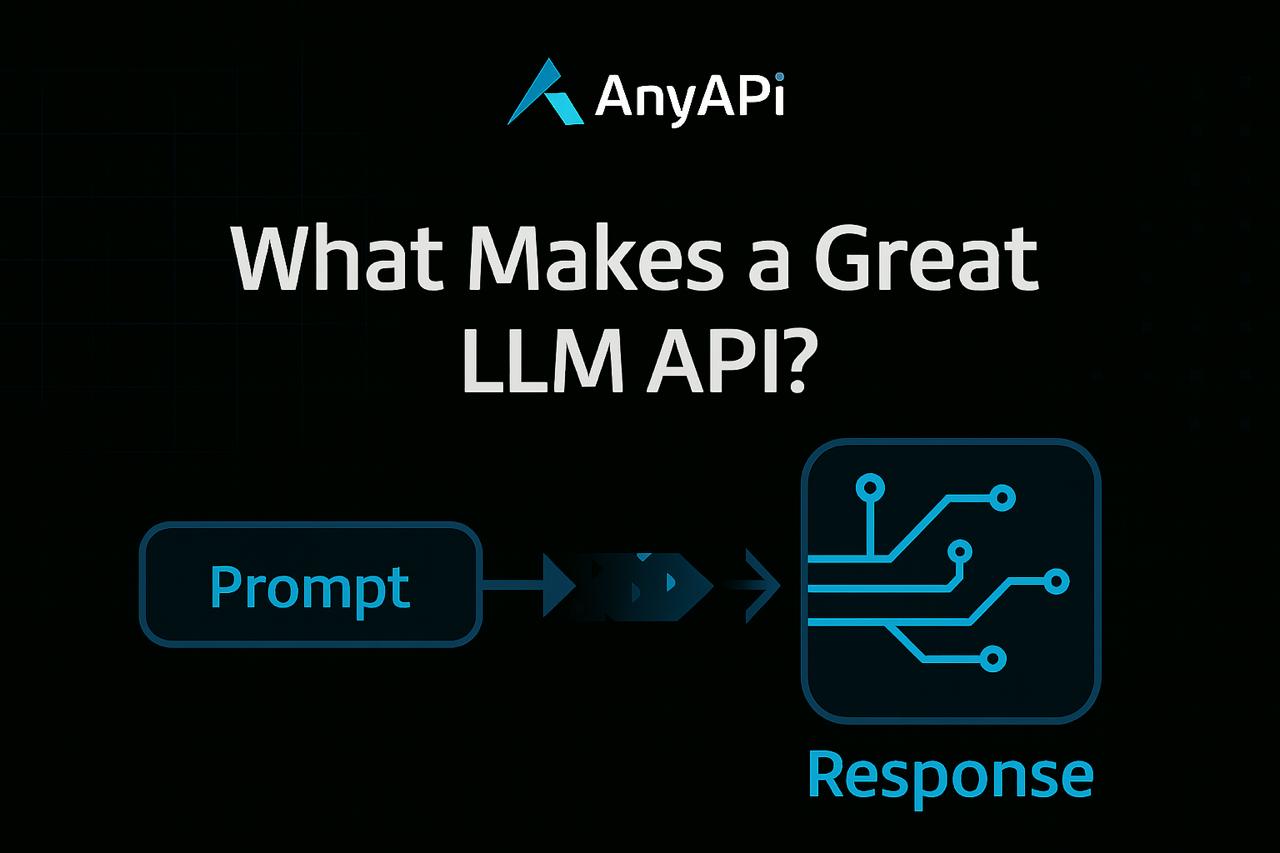What Makes a Good LLM API? Here’s What We Learned

You found the perfect prompt in a playground, but once you tried pushing that demo into staging, the cracks showed fast: inconsistent JSON formats, surprise rate limits, region‑specific latency, and a pricing sheet that reads like airline miles. An LLM API that looks fine on day one can become a liability on day thirty.
After talking with dozens of engineering teams – and shipping our own products – we’ve distilled the traits that separate an okay language‑model endpoint from an API developers can trust in production.
Consistent, Predictable Schema
An LLM API should feel familiar regardless of the underlying model. That means:
- Stable JSON contracts—no new required fields each time a model updates.
- Clear role conventions—system, user, assistant, function‑call all mapped the same way.
- Version pinning—you opt‑in to new model behaviors, not the other way around.
If you see frequent breaking changes or undocumented parameters, expect tech debt to snowball.
Breadth Without Bloat
Model choice matters. You’ll want an API that offers:
- Flagship models such as GPT‑4 Turbo, Claude 4 Sonnet, Gemini Pro.
- Lightweight options (Mistral 7B, Llama 3) when cost or latency is critical.
- Specialty models for code, images, or long‑context retrieval.
Breadth is valuable only if switching between models is friction‑free. Look for a single model field that handles the swap, with no extra headers or specialized SDK calls.
Latency You Can Afford in Every Region
A contract‑review tool in New York can tolerate 400 ms, but a chat assistant in Tokyo can’t. The best LLM APIs surface:
- Per‑region latency dashboards (US‑East, EU‑Frankfurt, APAC‑Tokyo).
- Edge routing – automatically selecting the nearest data center.
- Streaming responses – so front‑end users see tokens as they generate.
Avoid providers that only publish “average global latency.” Your users don’t live on an average globe.
Transparent Cost and Quota Controls
LLM pricing is token‑based, but each provider counts tokens differently. A good API abstracts the math by:
- Displaying real‑time spend per request.
- Letting teams set hard budgets or soft alerts.
- Offering model‑specific pricing up front—no hidden surcharges for extra context.
Without these, cost overruns become an end‑of‑month surprise.
First‑Class Observability
When prompts misbehave, logs are your lifeline. The right API should include:
- Full request/response capture with redaction options for PII.
- Token metrics—input, output, and total cost tags.
- Error traces that map to vendor status pages.
Skimping here can turn debugging into guesswork.
Security and Compliance Made Simple
Enterprise buyers will ask: does the API support SOC 2, GDPR, or data‑residency controls? Look for:
- Encryption in transit and at rest.
- Region‑locked inference to keep data in specific jurisdictions.
- Role‑based access control so staging keys never touch prod workloads.
Lacking any of these means adding layers of proxy infrastructure later.
Where Good APIs Save the Day
SaaS Startup Adds Multilingual Chat in 48 Hours
A two‑developer startup wanted live chat in Spanish and English. A stable schema let them prototype with GPT‑4 Turbo and then swap to Claude when cost forecasts spiked—no code changes besides the model string.
Legal Platform Handles 200‑Page Contracts
Their summarizer needs a 150 k‑token window. The API offered both GPT‑4 and Claude Sonnet. By reading latency dashboards, they routed US contracts to GPT‑4 and EU ones to Claude, saving 35 percent on average processing time.
Fintech Dashboard Integrates Code Copilot
Internal engineers built a TypeScript helper using an end‑to‑end streaming endpoint. Observability tools traced token usage per branch, keeping security teams happy and bills predictable.
Choose an API That Grows With You
Developers need an LLM gateway that minimizes integration overhead, scales across regions, and keeps cost transparent. Cutting corners on any one pillar – schema stability, latency routing, observability, or compliance – risks painful rewrites later.
That’s why platforms such as AnyAPI emphasize a robust contract, one‑key access to hundreds of leading models, built‑in cost controls, and edge‑level routing. In short, they let product teams focus on shipping value, not plumbing multiple vendors.
FAQ
How many models should a single API expose?
Enough to cover flagship, lightweight, and specialty tasks without forcing you to integrate new endpoints per provider.
Is streaming always better than non‑streaming?
For chat UIs, yes—users perceive faster responses. For batch back‑office jobs, async bulk endpoints are usually cheaper and simpler.
What’s the ideal latency budget for LLM features?
Under 600 ms for end‑user chat. Internal pipelines can tolerate 1–2 seconds if cost savings justify it.
How do I prevent runaway token costs?
Use an API that supports per‑key budgets, request‑level cost headers, and automatic throttling once limits hit.
Do I risk lock‑in with a unified LLM gateway?
Not if it keeps requests OpenAI‑compatible and lets you export logs. You can still hit vendor APIs directly if needed; the gateway just accelerates day‑to‑day work.





